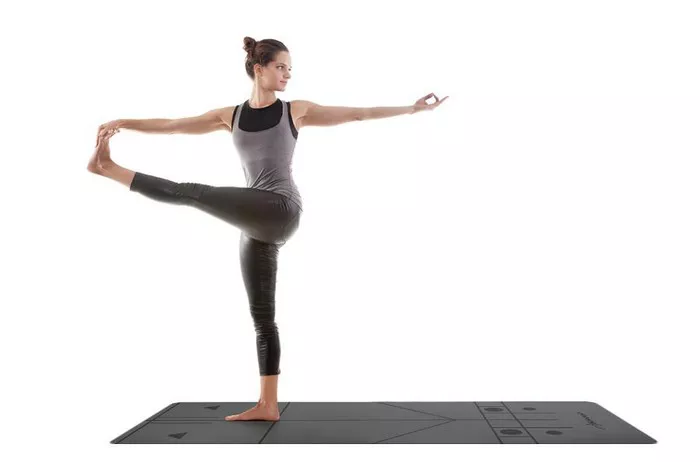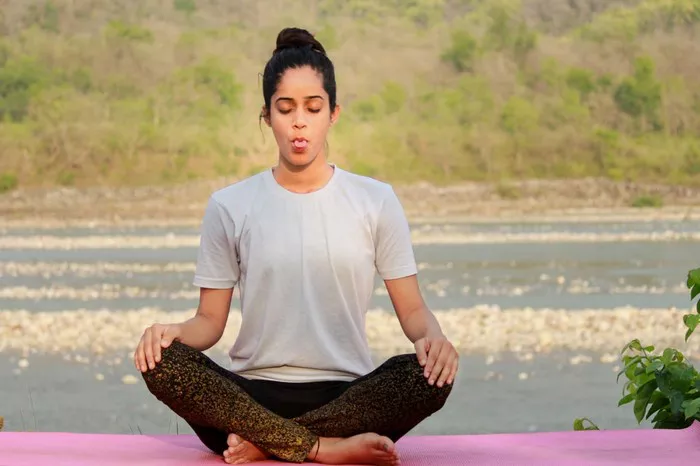Ashtanga Yoga, a profound and ancient practice, is structured around the Eight – Fold Path, a comprehensive roadmap that guides practitioners towards physical, mental, and spiritual well – being. This intricate system, laid out in Patanjali’s Yoga Sutras, offers a holistic approach to self – realization. Each fold builds upon the previous one, creating a harmonious progression that addresses various aspects of human existence.
The First Fold: Yama – Ethical Restraints
The Foundation of Moral Conduct
Yama represents the ethical and moral guidelines that govern our interactions with the external world. It serves as the foundation upon which the entire Ashtanga Yoga practice is built. By adhering to these principles, practitioners cultivate a sense of respect, compassion, and integrity in their daily lives.
Ahimsa – Non – Violence: At the core of Yama is Ahimsa, the principle of non – violence. This extends beyond physical harm and encompasses thoughts, words, and actions. Practicing Ahimsa means refraining from causing any form of pain, whether it is through aggression, criticism, or harmful behavior. It encourages us to approach others with kindness, empathy, and understanding.
Satya – Truthfulness: Satya emphasizes the importance of honesty in all aspects of life. It requires us to be truthful not only in our words but also in our thoughts and intentions. By living in truth, we build trust with others and, more importantly, with ourselves.
Asteya – Non – Stealing: Asteya goes beyond the literal act of stealing. It encourages us to respect the property, time, and energy of others. It also means not taking what is not rightfully ours, whether it is material possessions, ideas, or opportunities.
Brahmacharya – Moderation: Brahmacharya is often translated as celibacy, but its meaning extends far beyond sexual restraint. It represents moderation in all aspects of life, including our desires, actions, and consumption. By practicing Brahmacharya, we learn to channel our energy towards self – improvement and spiritual growth.
Aparigraha – Non – Greed: Aparigraha teaches us to let go of attachment and greed. It encourages us to be content with what we have and not to hoard or accumulate unnecessary possessions. By cultivating a spirit of non – greed, we free ourselves from the burden of materialism and open ourselves up to a more fulfilling and meaningful life.
The Second Fold: Niyama – Inner Observances
Cultivating Self – Awareness
Niyama focuses on the internal practices that help us develop a deeper understanding of ourselves and our relationship with the world. These observances are designed to purify the mind and body, creating a conducive environment for spiritual growth.
Saucha – Purity: Saucha refers to both physical and mental purity.
Physically, it involves maintaining cleanliness in our bodies, surroundings, and diet. Mentally, it means purifying our thoughts and emotions by letting go of negative patterns and cultivating positive ones.
Santosha – Contentment: Santosha is the practice of finding contentment in the present moment. It teaches us to appreciate what we have rather than constantly striving for more. By cultivating contentment, we reduce stress and anxiety and experience greater peace and happiness in our lives.
Tapas – Austerity: Tapas involves the practice of self – discipline and self – control. It requires us to make sacrifices and endure discomfort in order to achieve our goals. Tapas can be applied in various aspects of life, such as through physical exercise, meditation, or giving up bad habits.
Svadhyaya – Self – Study: Svadhyaya encourages us to study ourselves, both physically and mentally. It involves reflecting on our thoughts, feelings, and behaviors, and seeking to understand our true nature. By engaging in self – study, we gain insights into our strengths and weaknesses and can make positive changes in our lives.
Isvara Pranidhana – Surrender to a Higher Power: Isvara Pranidhana is the practice of surrendering to a higher power or a greater force. It can be interpreted in different ways, depending on one’s beliefs. For some, it may mean surrendering to God, while for others, it could be surrendering to the wisdom of the universe or the natural flow of life.
The Third Fold: Asana – Physical Postures
Aligning the Body and Mind
Asana is the most well – known aspect of Ashtanga Yoga, referring to the physical postures that practitioners perform. However, Asana is not just about physical fitness; it is a means of aligning the body, mind, and breath.
The Sequential Asana Practice: In Ashtanga Yoga, the asana practice is structured in a specific sequence. The primary series, known as Yoga Chikitsa, is designed to remove toxins from the body and align the spine. It begins with a set of sun salutations (Surya Namaskar), which warm up the body and prepare it for the more challenging poses that follow. The series then progresses through a series of standing poses, seated poses, forward bends, backbends, twists, and inversions. Each pose builds upon the previous one, gradually increasing in difficulty and complexity.
Benefits of Asana Practice: Regular asana practice offers numerous physical benefits, such as increased flexibility, strength, and balance. It also improves posture, enhances circulation, and boosts the immune system. On a mental level, Asana helps to calm the mind, reduce stress, and improve concentration. By focusing on the alignment and movement of the body, practitioners are able to bring their attention to the present moment, quieting the constant chatter of the mind.
The Fourth Fold: Pranayama – Breath Control
Harnessing the Power of the Breath
Pranayama is the practice of controlling the breath, which is considered the life force or energy within the body. By regulating the breath, practitioners can influence the flow of Prana (life energy) and achieve a state of physical and mental balance.
Techniques of Pranayama: There are various Pranayama techniques practiced in Ashtanga Yoga, each with its own unique benefits. Some of the most common techniques include Ujjayi breath, which involves a slow, deep, and audible inhalation and exhalation through the nose; Nadi Shodhana (alternate nostril breathing), which helps to balance the left and right hemispheres of the brain; and Bhramari (humming bee breath), which calms the mind and reduces stress.
The Connection between Breath and Mind: The breath and the mind are closely connected. When the breath is calm and steady, the mind also becomes calm and focused. Conversely, when the mind is agitated, the breath becomes rapid and shallow. Through Pranayama practice, practitioners learn to control their breath, which in turn helps to calm the mind and reduce negative thoughts and emotions.
The Fifth Fold: Pratyahara – Withdrawal of the Senses
Turning Inward
Pratyahara is the practice of withdrawing the senses from external stimuli and turning our attention inward. In a world filled with constant distractions, Pratyahara helps us to cultivate a sense of inner peace and focus.
Detaching from the External World: In Pratyahara, we learn to observe our senses without getting caught up in the sensations they produce. For example, instead of immediately reacting to a pleasant smell or a beautiful sight, we learn to observe these sensations objectively, without judgment or attachment. By detaching from the external world, we are able to turn our attention inward and focus on our inner experience.
Developing Inner Awareness: Pratyahara is an important step in the journey towards self – realization. By withdrawing the senses, we are able to develop a deeper awareness of our thoughts, feelings, and emotions. This inner awareness allows us to observe our patterns of behavior and make positive changes in our lives.
The Sixth Fold: Dharana – Concentration
Focusing the Mind
Dharana is the practice of concentration, where we focus our attention on a single object, such as the breath, a mantra, or a particular point in the body. This helps to train the mind to stay focused and prevent it from wandering.
Techniques of Dharana: There are several techniques that can be used to practice Dharana. One common technique is to focus on the breath, observing the inhalation and exhalation without trying to change it. Another technique is to repeat a mantra, such as “Om,” which helps to quiet the mind and focus the attention. Visualization is also a powerful technique, where we imagine a peaceful and serene place or a positive image in our mind’s eye.
Benefits of Dharana Practice: Regular Dharana practice improves concentration, memory, and mental clarity. It also helps to reduce stress and anxiety by training the mind to stay focused on the present moment. By developing the ability to concentrate, we are better able to perform tasks with greater efficiency and effectiveness.
The Seventh Fold: Dhyana – Meditation
Entering the State of Deep Absorption
Dhyana is the practice of meditation, which is a natural progression from Dharana. In Dhyana, the mind becomes completely absorbed in the object of concentration, and there is a sense of oneness between the meditator and the object of meditation.
The Experience of Dhyana: During Dhyana, the mind is in a state of deep calm and stillness. There are no thoughts or distractions, only a deep sense of peace and awareness. The meditator experiences a profound connection with the object of meditation, whether it is the breath, a mantra, or a spiritual concept.
Benefits of Dhyana Practice: Dhyana offers numerous benefits for both the mind and body. It reduces stress, anxiety, and depression, and improves overall mental health. It also enhances creativity, intuition, and spiritual awareness. By regularly practicing Dhyana, we can experience a greater sense of inner peace, happiness, and fulfillment.
The Eighth Fold: Samadhi – Enlightenment
The Ultimate Goal
Samadhi is the final stage of the Eight – Fold Path, representing the state of enlightenment or self – realization. It is a state of profound peace, joy, and unity with the universe.
The Nature of Samadhi: In Samadhi, the individual self dissolves, and there is a complete identification with the universal consciousness. It is a state beyond words and concepts, where the meditator experiences a direct realization of the true nature of reality.
Achieving Samadhi: Achieving Samadhi is a long and arduous journey that requires consistent practice of the other seven folds of Ashtanga Yoga. It is not something that can be achieved overnight but rather through years of dedicated practice, self – discipline, and spiritual growth.
Conclusion
In conclusion, the Eight – Fold Paths of Ashtanga Yoga offer a comprehensive and holistic approach to physical, mental, and spiritual well – being. By incorporating these principles and practices into our daily lives, we can experience a profound transformation, both within ourselves and in our relationship with the world. Whether we are beginners or advanced practitioners, the Eight – Fold Paths provide a roadmap for personal growth, self – discovery, and the ultimate goal of enlightenment.

















